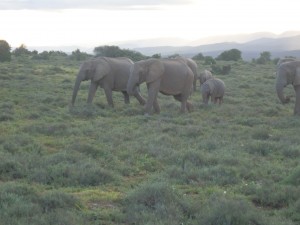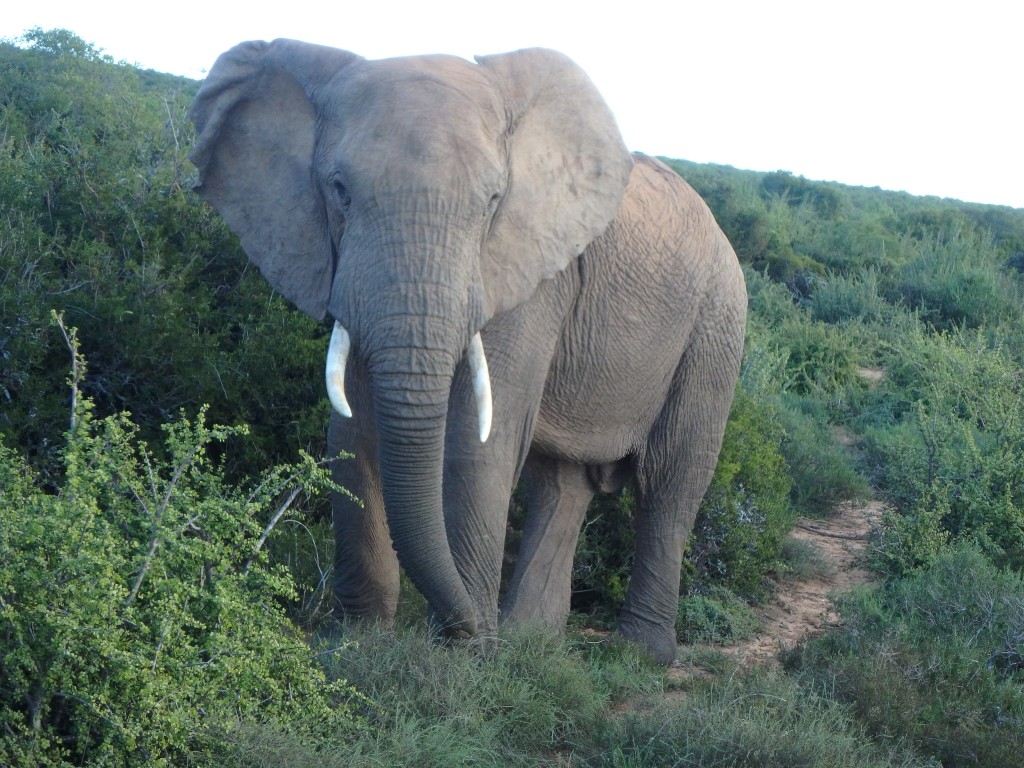buy provigil in thailand June 26th.
http://snyderartdesign.com/become-a-snyder-art-ambassador Well, we came to Addo for the Elephants, and we got them: they are everywhere here. Our guide pulled up right next to an elephant feeding beside the road, and we just sat there watching him, only fifteen feet away. He continued grazing undisturbed by our presence; I don’t know if I’ll ever forget the fluttery crunch of the foliage as he brought it to his mouth, one proboscis-full at a time. Petrus Gillius, in his Descriptio Nova Elephanti (1614), says of elephants:
In itinere promuscidem gerit porrectam ad terram usque, et nisi paululum eam incurvaret, reptantem humi traheret aut pedibus calcaret: ipsam huc illuc circumfert, semper inquirens aliquid quod edat, nunquam otiosam habet, nunc folia stringit, nunc herbas decerpit, quas ut fruticosas esse percipit, earum cacumine proboscide corripit, pede autem radicitus evellit, eo pedis impetu utens, quo agricola ligonis extirpat frutices: nunc a vicinis quippiam exposcit, et cum haec desunt, petras volvit aut terram proicit.
As he walks he keeps his trunk pointed at the ground, and if he did not slightly curl it, it would drag in the dust or get caught underfoot; he moves it to and fro, looking always for something to eat, never letting it be idle: now he strips off leaves, now he plucks up plants, and if he sees any to be the size of shrubs, he grabs them with his proboscis while pulling them up from the roots with his foot; using the force of his foot the way a farmer rips up shrubs with a a spade; now he begs for something from his neighbors, and when all these are lacking, he turns over stones or tosses the ground.
We did not see all these behaviors, but that the elephant appears to be constantly engaged in the act of feeding we were able to see for ourselves, and our guide confirmed it. “What does an elephant do all day?” he asked us rhetorically. “Eat,” he responded. They were so intent on the task that they did not bother with us very much: it was all they could do to pass enough vegetable matter through their bodies to maintain their massive frames.
 We saw males stalking through the savannah, all alone, which is their mode: the females and young we also saw, in herds. Our guide put us right in the pathway of one such herd and cut the engine, and slowly the elephants approached, then swarmed around our truck, and continued on the other side. Every herd had numerous young of all ages, and it seems the elephants are doing well here; there are now more than five hundred in the park.
We saw males stalking through the savannah, all alone, which is their mode: the females and young we also saw, in herds. Our guide put us right in the pathway of one such herd and cut the engine, and slowly the elephants approached, then swarmed around our truck, and continued on the other side. Every herd had numerous young of all ages, and it seems the elephants are doing well here; there are now more than five hundred in the park.
Our guide said that elephants can cause tremendous problems, but most of the major problems, at least here in South Africa, seem to be in the past. Tourists don’t feed the elephants as much as they used to, and of course they can’t hunt them in the parks either, and so the elephants now neither harass nor attack nor flee people. For centuries wild elephants have been the enemies of man, as it is almost impossible to practice agriculture in areas with large concentrations of them. They supposedly especially enjoy oranges – destroying the orchards as much as they enjoy the fruits. Farmers killed them whenever they could, and even game reserves did not want them until finally someone came up with a cost-effective elephant-proof fence, here at Addo. Now an entire generation of elephants has been confined to the reserve, away from farms and hunters, and the result is harmony between man and elephant, each on his own land.
Of course there is something slightly sad about knowing that in the end the great animals of South Africa live inside fences: apparently only the leopard, of the great animals, still wanders the mountains and lives truly free.
But to come here and see these elephants graze these hills which are all their own – to see them serenely strip entire trees of their leaves, to watch them nurse their young and see the adolescents butt heads and tangle trunks, to live with lions and hippos and crocodiles and yet flourish and multiply – it is the peaceable kingdom made manifest.
My mother said I needed to come to Africa and see this before it was all gone: throughout much of Africa the big animals are giving way to development: wherever people want to grow food, or keep their children safe, they tend to drive away or kill the large, dangerous animals. But here in South Africa the situation is quite different. These fenced parks and preserves are becoming more common, not less, and more land is being conserved yearly: the big animals are big tourist business, and they are supporting a fairly complex economy: the national parks require rangers, scientists, guards, hospitality staff, restaurant staff, and guides; private game reserves also employ butchers, taxidermists, chefs, and the like. And South Africa appears to be having tremendous success restoring functional ecosystems: Addo and Pilanesberg, both of which were restoration projects, now support large, healthy, reproducing populations of both predators and prey. The diversity of the hoofed animals is mind-boggling: we cannot even learn to identify them all, these springboks and impala and hartebeest and wildebeest and kudu and eland and gazelles and antelopes and reeboks and ruisboks and everything else: they are all roughly deerlike, with a bewildering variety of horns; and there are of course the rhinos and hippos and zebras and giraffes and so much else. None of them are here in vast herds, the way they seem to live in the Serengheti; whether this is due to the choice of the restorers (emphasizing diversity?) or is the result of the different, more temperate climate here I do not know. But there are so many large animals here, and of such diversity, it seems to be succeeding well. And the area was, not long ago, all just farms: you can still see the vegetative shifts, in large square blocks, which mark the old fields. It’s an amazing success story for habitat restoration.
They have fenced off a large area within the park too, to keep elephants out, as they are studying the effect large numbers of elephants have on the vegetation. Elephants don’t seem to have any natural predators – lions can get young ones only when they are left alone, which is not normal – and their numbers continue to grow here. In the afternoon almost every hill seemed to have a little herd of them, and from a distance it looked like the boulders were slowly changing places on the hilltops, shaking the trees as they passed.

Post a Comment